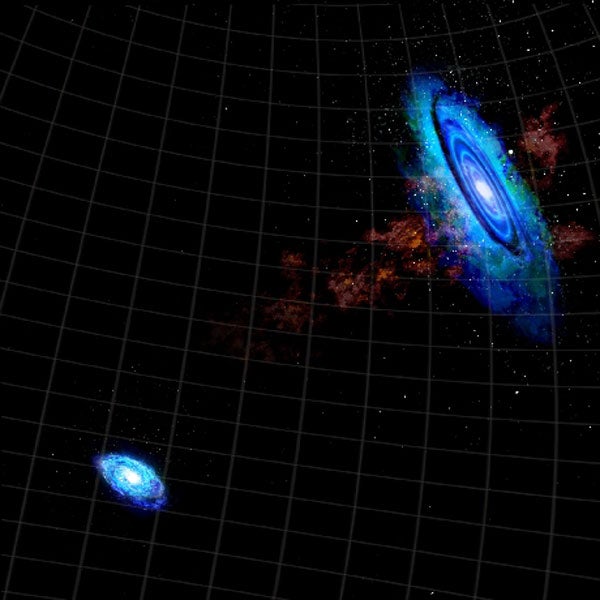“The properties of this gas indicate that these two galaxies may have passed close together in the distant past,” said Jay Lockman from the National Radio Astronomy Observatory (NRAO). “Studying what may be a gaseous link between the two can give us a new key to understanding the evolution of both galaxies.”
The two galaxies that are about 2.6 and 3 million light-years from Earth are members of the Local Group of galaxies, which includes our Milky Way Galaxy and about 30 others.
In 2004, astronomers discovered the hydrogen “bridge” between the galaxies, using the Westerbork Synthesis Radio Telescope in the Netherlands, but other scientists questioned the discovery on technical grounds. Detailed studies with the highly sensitive GBT confirmed the existence of the bridge, and showed six dense clumps of gas in the stream.
Observations of these clumps showed that they share roughly the same relative velocity with respect to Earth as the two galaxies, strengthening the argument that they are part of a bridge between the two.
When galaxies pass close to each other, one result is “tidal tails” of gas pulled into intergalactic space from the galaxies as lengthy streams. “We think it’s very likely that the hydrogen gas we see between M31 and M33 is the remnant of a tidal tail that originated during a close encounter, probably billions of years ago,” said Spencer Wolfe from West Virginia University. “The encounter had to be long ago because neither galaxy shows evidence of disruption today.”
“The gas we studied is very tenuous and its radio emission is extremely faint — so faint that it is beyond the reach of most radio telescopes,” Lockman said. “We plan to use the advanced capabilities of the GBT to continue this work and learn more about both the gas and, hopefully, the orbital histories of the two galaxies.”










